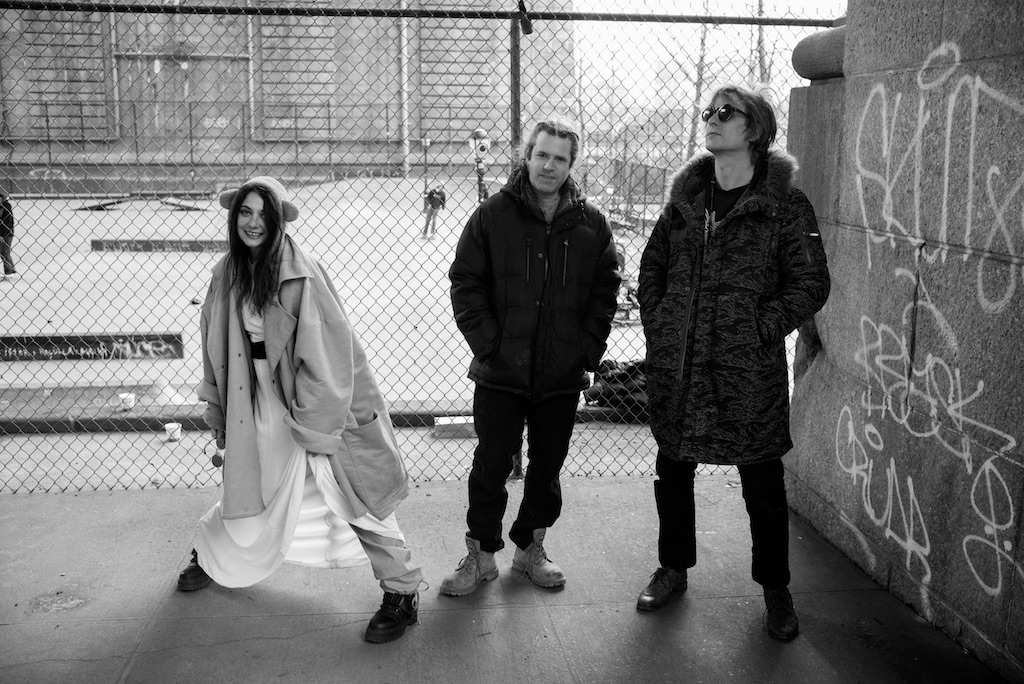[ad_1]
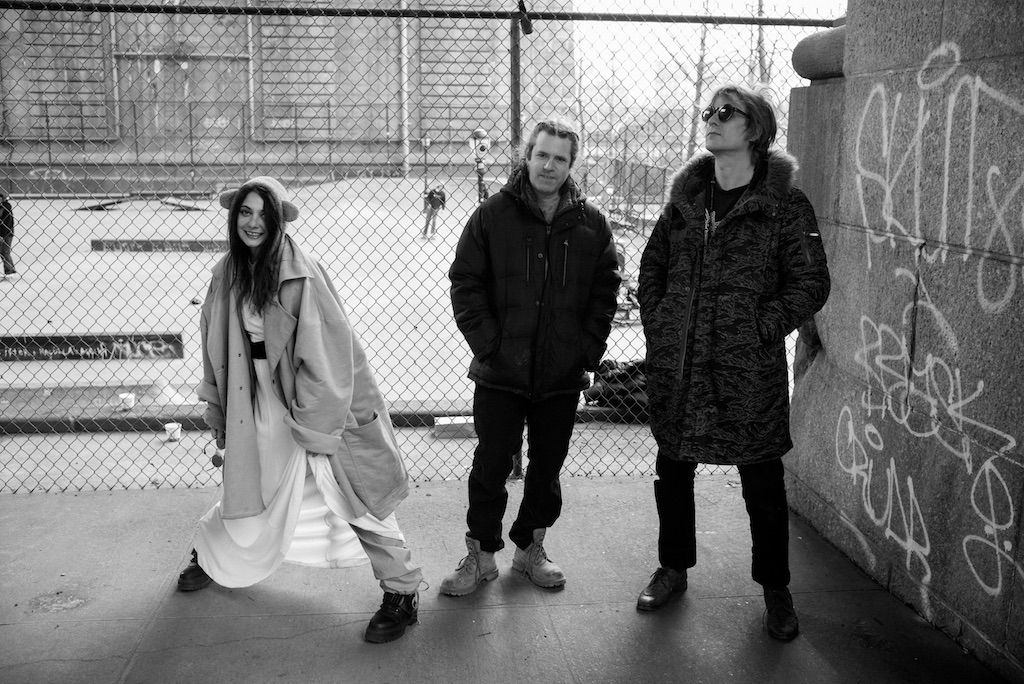
Gang Gang Dance, from left to right: Lizzi Bougatsos, Josh Diamond, and Brian DeGraw.
ARI MARCOPOULOS
“Muses” is a column for which creators from different disciplines reveal sources of artistic inspiration and instigation.
Brian DeGraw is one of the masterminds behind Gang Gang Dance, a weird and worldly art-rock band that has helped define the smearier outer margins of the New York music scene since 2001. After coming up alongside the abstract likes of Animal Collective and Black Dice, the group has grown more electronically inclined over the years—such that their new album Kazuashita is suffused with ethereal sounds and suggestive atmospheres. —The Editors
Roy De Forest
I didn’t know about Roy De Forest until just over a year or so ago when I came across some of his work in a group show at Derek Eller Gallery in New York. Happening upon his drawings that day was one of those all-too-rare moments when I feel like the use of the word “breathtaking” is completely legitimate. His work has a certain quality that I strive for in my own: a perfect blend of naivety and proficiency that is able bounce back and forth between the conscious and unconscious. A lazy description would probably include the word “childlike,” but there is much more to it than that—while the term is fitting to a degree (as in the constant depiction of crudely rendered dogs and other small animals, or gestural marks that appear to have been made without the filter that the grown brain loves to force upon acts of simple instinct), there is also something undeniably “adult” about his work. There are portals to other worlds and delicate balancing acts of layers, textures, and materials that I find to be absolutely masterful—and could only be the work of someone with years of practice and exploration.
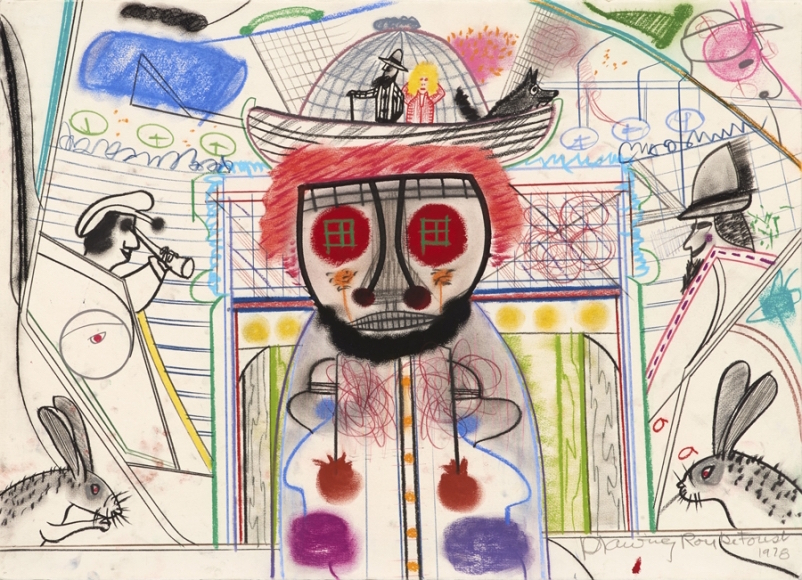
Roy De Forest, Untitled, 1978.
COURTESY DEREK ELLER GALLERY
Future Fossils podcast by Michael Garfield
I listen to this podcast quite a lot. I don’t know exactly how to classify it, and perhaps that is part of the appeal. While Michael Garfield and his guests generally tend to address ideas and issues that can be considered part of the Anthropocene, the subject matter varies extensively within that very loose classification. I have listened to discussions on anything from the biomusical communication of animals and AI robot sex to ecological activism and shamanic psychedelia. The conversations are always incredibly well-informed and visionary—absolutely beyond the average brain-fried, loin-cloth-wearing, Burning Man dialogue that these types of podcasts often suggest.
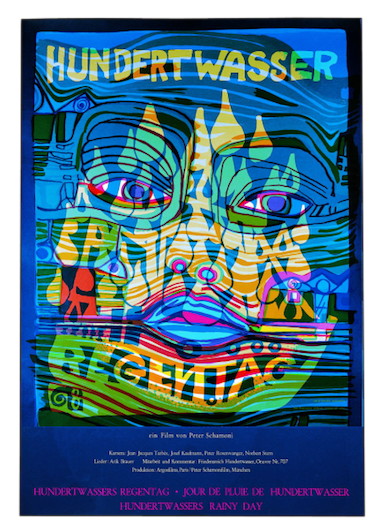
Poster for Hunterwasser’s Rainy Day.
Hundertwasser’s Rainy Day
I recently discovered this short documentary film by Peter Schamoni and have been thinking about it a lot ever since. Released in 1972, it is a perfect glimpse into the mind, practice, and spirit of the artist and architect Friedensreich Hundertwasser. I find everything about this film completely enthralling, not only due to its subject but also in the way it is shot and edited, and the trance-like state in which components of sound seem to wash over me when I watch it. I find this film to have a very calming effect in so many ways that I sometimes find myself watching it solely as a sort of device for self-care. There is one bit where Hundertwasser is speaking about how he loves rainy days because colors become exaggerated and saturated and reflections of light are heightened. As a person who is heavily afflicted with seasonal affective disorder, any lack of sunshine tends to drop me immediately into a depressive and lethargic state. But thanks to his take on the rain, I now have a new way to fight against that. I try my best now to venture out into the rain in search of that saturation.
Rita Ackermann & Daniel Turner at Eleven Madison Park
I recently had the opportunity to attend a dinner for Rita Ackermann’s birthday at Eleven Madison Park, which has been proclaimed the world’s best restaurant by the makers of the World’s 50 Best Restaurants list. While I tend to consciously avoid (or rarely be invited to!) most things that have been declared by the uppermost classes as “the world’s best” anything, I am extremely happy I went, not only to have joined in celebrating my dear friend Rita and to sample some of the food (which was indeed not bad at all) but to have laid eyes on two pieces of artwork, one by Rita and the other by her partner Daniel Turner. Rita’s painting (one of her chalkboard works) hangs on the back wall of the main dining area. Enormous in both scale and emotion, it stands watch over the room in the way a giant pipe organ might peacefully lurk over the nave of a church. There is an incredibly divine feeling to the way the painting interacts with the expansiveness of the space. It blankets the room with a sacred hum. Daniel’s piece, while much more understated in terms of scale and placement, is equally gigantic in spirit and effect. A single charcoal black step that one uses to enter the dining area, the piece was created by melting down the stove from the restaurant’s previous kitchen into a liquid state that was then cast into the long rectangular shape of its final and current form. The way these two works interact is a strength in and of itself. An element of sanctity runs deep through both pieces. While the grandness of Rita’s is almost impossible to ignore, Daniel’s goes virtually unnoticed to the those who haven’t been informed of where and what it is. But there is a sense, when standing in the space, that one absolutely could not exist without the other, and that the temple-like mood owes everything to this symbiosis. This pairing of works is godly in its metaphorical romance.
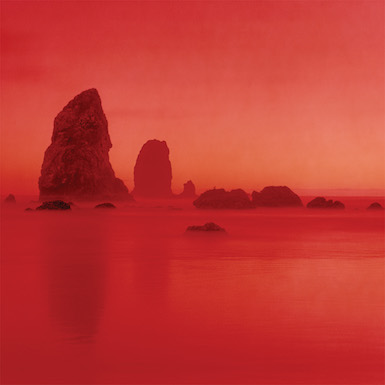
Cover art for Gang Gang Dance’s Kazuashita by David Benjamin Sherry.
Leatherface
Leatherface is an artist I deeply admire. He is a homeless man who lives mostly in shelters in and around the Lower East Side of New York. Every once in a while I will go visit him on the Bowery, where, on warm days, he is usually sprawled out on the sidewalk among his drawings and materials. His work often consists of ballpoint pen and marker drawings that depict a wild array of characters both real and fictional. He takes familiar subjects like Bob Marley, Nelson Mandela, or Howard Cosell and places them within the fantastical environments of his imagination. One of my favorite works of his depicts Mandela, Tupac Shakur, Michael Jackson, and Martin Luther King, Jr. playing a game of basketball. Both teams are playing for God’s Love (the local New York-area food-delivery service for the homeless) while an audience of snowmen, human-sized birds, scarecrows, and all sorts of other characters cheer from the bleachers. Whenever Leatherface works, he is accompanied by a variety of small plastic animal figurines—a lizard, a dinosaur, a caterpillar—who he says keep him company and inspire ideas. He is such a kind man with a heart of gold and a spirit that lifts and inspires me every time I see him and his work.
Sussan Deyhim with the Polish Radio Orchestra
This performance on YouTube of Sussan Deyhim’s vocal improvisations with the Polish Radio Orchestra was something I found myself listening to repeatedly when I was working on the latest Gang Gang Dance record. I don’t know if or how it ended up reflecting in the record itself, but the spirit of this music was something I carried with me throughout the working process. When I listen to it, I am traveling far beyond the limits of my own ego, transported into the drift of the cosmos where I watch the origins of life unfold. It’s like a soundtrack to the Big Bang.
[ad_2]
Source link

